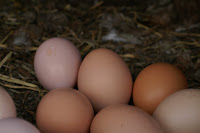By Alfred Lubrano | The Philadelphia Inquirer
9:04 AM CDT, May 19, 2008
PHILADELPHIA - Some of the fattest people in America are among the poorest.
And with food prices rising, the problem is likely to get worse.
Tianna Gaines, who describes herself as impoverished and obese, knows this. At 5-foot-3 and 242 pounds, she lives on public assistance and eats junk food because it's cheap and more readily available in her neighborhood than carrots and apples.
Besides, said Gaines, 28, and a mother of three, "I don't have the money for Bally's fitness clubs. And I can't run here. They shoot you."
More poor people may suffer Gaines' fate, with the U.S. Department of Agriculture predicting food prices will be up 4.5 percent throughout the year, due to high fuel costs, weather problems, and the growing diversion of corn crops to make ethanol. Globally, prices will rise nearly 50 percent, according to the president's Council of Economic Advisers.
"The food crisis will make obesity and attendant diabetes even more rampant," said University of Washington epidemiologist Adam Drewnowski. "Fruits, vegetables and fish are becoming luxury goods completely out of reach of many people. Consumption of cheap food will only grow.
"Obesity is the toxic consequence of a failing economy."
While more people from every economic background are becoming obese around the world, the poor are still outpacing the better-off.
A recent U.S. Department of Health and Human Services study found that women in poverty were roughly 50 percent more likely to be obese than those with higher socioeconomic status.
In U.S. households making less than $15,000 a year, 31 percent of the women are obese, according to the federal Centers for Disease Control and Prevention. In households with more than $50,000 annually, 17 percent are obese.
University of Pennsylvania epidemiologist Shiriki Kumanyika and other investigators found that poor 15-to-17-year-olds — black or white, male or female — were 50 percent more likely to carry excessive poundage than non-poor teens.
And a study by Drewnowski last year showed that obesity rates in poor Seattle neighborhoods were 600 percent greater than in rich areas.
Poor people frequently live in "food deserts" — neighborhoods with few supermarkets. They rely on corner stores and convenience marts for groceries, said Carey Morgan, director of the Greater Philadelphia Coalition Against Hunger.
These are great places to buy chips and soda, not so good for asparagus.
Concentrating on filling their stomachs, poor, hungry people go for high-fat, high-sugar foods. "They're not thinking about health — just getting through the day," said Mariana Chilton, a hunger expert at the Drexel University School of Public Health, and principal investigator for the Philadelphia GROW Project, which deals with nutrition and physical development among poor children.
Derek Felton, a community organizer with the Coalition Against Hunger and a former poor, obese person, agreed.
"I was the oldest of seven, with a lifetime of no breakfasts to eat," said Felton, who is 5-foot-9 and went from 247 pounds to 185. "When we had the chance to eat, we ate white bread to feel full."
All that corner-store processed food is relatively inexpensive — artificially so. Researchers say that many junk foods contain high-fructose corn syrup, made from government-subsidized corn crops. Federal help keeps the cost of syrup-containing foods such as sodas, fries and even burgers down. Drewnowski said that healthful, unsubsidized foods like spinach cost five times more per calorie to produce, thus driving up the price.
Food stamps are supposed to help. But Chilton's research shows that the allotments families in Philadelphia receive are not accounting for higher food prices.
As a result, families often run out of food stamps by the second or third week of the month, Chilton said.
The hunger can be excruciating, said Gaines, who lets her three children under age 4 eat whatever food is left after the stamps are gone.
It makes her all the more voracious at the beginning of each month, when the new stamps arrive.
"You go without eating, then gorge," Gaines said. "Then you go to sleep with a full stomach. That's how the weight picks up."
It works that way for lots of people. And with the current food inflation, even cheap foods are getting more expensive.
"What choices can poor people afford now?" asked Stella Volpe, a nutritionist at the University of Pennsylvania's School of Nursing. "Will their diets get even worse, and will hard times contribute to more obesity?"
Interventions to improve the eating habits of the poor in Philadelphia have "failed miserably," according to Terri Lipman, a colleague of Volpe's at the nursing school.
"We've told kids to eat fruit and walk," she said. But fruits are scarce and walking in poor neighborhoods can be dangerous, Lipman added.
Current school programs, like dance aerobics, are making some inroads toward health, she said. And Students Run Philly Style, which teaches poor kids to run in supervised settings, is creating good results, said Heather McDanel, director of the National Nursing Centers Consortium project, which works with Students Run.
"BMIs are down and kids' self-esteem is up," she said.
Still, experts say that if food prices continue to explode, even the better-off will seek more fast-food meals.
"Bad, cheap foods may become an even greater cultural mainstay," Volpe said, "with the middle class going for less expensive food. And becoming more obese."
from chicagotribune.com















